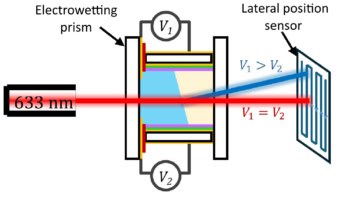
Modern-day communications rely on both fibre-optic cables and wireless radiofrequency (RF) microwave communications. Reaching higher data transmission capabilities is going to require technologies that can efficiently process and convert both optical and microwave signals in a small and energy-efficient package that’s compatible with existing communication networks.
Microwave photonics (MWP) is one of the frontrunning technologies, as it can perform signal processing tasks within the optical domain. Current MWP approaches, however, are typically power intensive and often require many off-chip devices to achieve the desired device capabilities and functionalities – so are not very scalable. Researchers from Belgium and France have now managed to overcome some of these limitations, reporting their findings in Nature Communications.
“We wanted to demonstrate that photonic chips can be as versatile as electronic chips, and one of the fields where the two overlap is that of microwave photonics,” one of the paper’s lead authors, Wim Bogaerts from Ghent University, tells Physics World.
A photonic engine
The researchers have created a photonic engine that processes microwave and optical signals and can convert the signals between the two domains. It is a silicon chip that can generate and detect optical and analogue electrical signals. The chip uses a combination of tuneable lasers (created by using an optical amplifier with on-chip filter circuits), electro-optic modulators and photodetectors, low-loss waveguides and passive components, and a programmable optical filter – which enables the chip to filter signals in both domains.
“We managed to integrate all key functionalities for manipulation of microwave signals and optical signals together on a single silicon chip and use that chip as a programmable engine in different experimental demonstrations,” says Bogaerts.
This setup allowed the researchers to operate the chip as a black-box microwave photonics processor, where the user can process high-frequency RF signals, without being exposed to the internal optical operations (they are hidden).
Optical signals from an external optical fibre are coupled to the chip using a grating coupler and high-speed RF signals are fed into the chip using electro-optic modulators. The RF signal is imprinted into an optical carrier wavelength – which is generated by the on-chip laser – and the signal is then processed on the chip using an optical filter bank. The signal then gets converted back into an RF signal using photodetectors.
All of the signals travelling into and out of the chip can be confined to the RF domain, so the chip doesn’t require any external optical components, unlike many other MWP devices. Moreover, the signals are locally programmed and tuned using thermo-optic phase shifters, enabling users to select any combination of microwave and optical inputs and outputs across the chip.
Extensive applications
The researchers used the photonic engine to create multiple systems that showcase its different optical and RF signal processing capabilities and demonstrate a potential pathway towards smaller MWP systems for high-speed wireless communication networks and microwave sensing applications.
As well as being used for simple light-tuning applications, the chip can also perform optical-to-electrical signal conversion, electrical-to-optical signal conversion, microwave frequency doubling, and microwave/optical filtering and equalization. These functions allow it to be used as a transmitter, receiver, optical/microwave filter, frequency converter or a tuneable opto-electronic oscillator.

Michael Robertson: pioneer of optical communications disconnects from the network
When asked about the future of the chip, Bogaerts states that “we plan combine this functionality with more general purpose photonic circuits to enable even more functions and applications to help product developers roll out new photonic products as easily as new electronics products”.
Some other potential applications for the chip that have been touted – but not physically tested in this study – include RF instantaneous frequency measuring, radio-over-fibre links, RF phase tuning, optical and RF switching, optical sensing and signal temporal computing. With so many possibilities, this small-scale and low-power chip could become increasingly important as technologies such as communications advance further.


